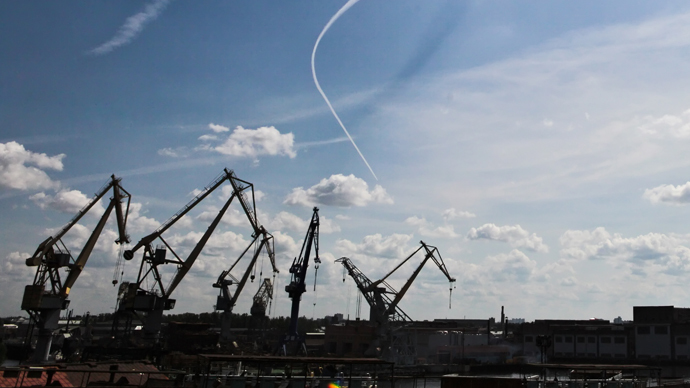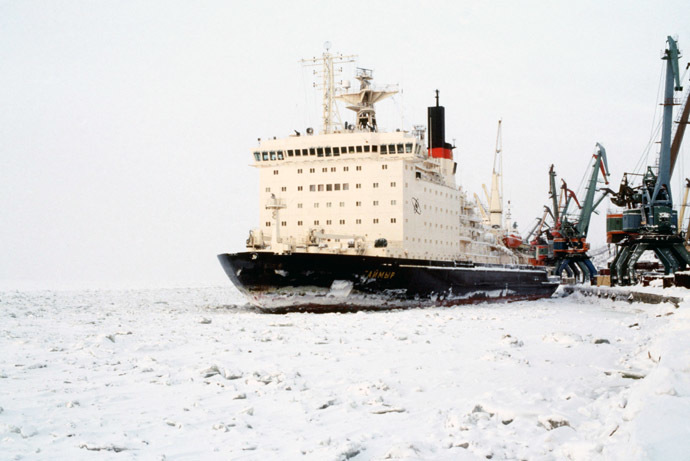Russia lays down world’s largest icebreaker

Russia has started building the world’s largest universal nuclear-powered icebreaker capable of navigating in the Arctic and in the shallow waters of Siberian rivers. The unique vessel will further increase Russia’s dominance in the region.
The 173m ship is being built by the Baltiysky Zavod shipyard in
St Petersburg, and is planned to be completed by 2017. Once
finished the ship will be 14 meters longer and 4 meters wider
than the current record holder, “50 year Victory” that is 159
meters long and 30 meters wide.
"There is no doubt that this work will be completed on time
and in good quality," said the head of "United Shipbuilding
Corporation" Vladimir Shmakov.
In August 2012 Atomflot – a sister company of Rosatom signed a 37
billion ruble ($1.2 billion) contract to begin construction of a
"universal" vessel. According to the general director of
Atomflot Vyacheslav Ruksha, the Icebreaker LK-60 Project 22220
vessel is likely to be called the "Arctic".
Powered by two “RITM-200” pressurized water reactors the “Arctic”
is being built to generate 175MWe. Its efficiency and power
allows the new model to crack ice fields 3 meters thick.
The Arctic will be granted the highest ice class – 9, meaning the
ship will be able to break ice in the Arctic area all year round.

The new design will allow the icebreaker to alter its draught, or
the depth of the loaded vessel in the water between 8.5 to 10.8
meters. This will enable the ship to navigate the shallow waters
of Siberian rivers as well as the Arctic and tow ships of up to
70,000 tons.
Atomflot has also announced an 80 million ruble ($2.5 billion)
tender for the construction of two similar class icebreakers
which will be announced in the near future, and their delivery to
the Navy is expected sometime between 2018 and 2020. The main
objectives of these new icebreakers would be servicing the
Northern Sea Route and carrying out various expeditions to the
Arctic.
Constructions of new icebreakers are important for Moscow as
Russia is continuing to collect data to expand its continental
shelf borders in the Arctic. The US, Canada, Norway, and Denmark
and Iceland have also announced claims to exclusive economic
rights on the Arctic shelf. Russia argues that “Lomonosov Ridge”
is an extension of Siberia’s shelf, and therefore belongs to
Russia exclusively.
Russia, the only country with nuclear powered icebreakers,
currently has 5 vessels cruising the Arctic, built between 1985
and 2007.
Russian companies also use "Vaygach" and "Taymyr", two
shallow-draft nuclear-powered icebreakers to navigate Siberia’s
frozen rivers.















